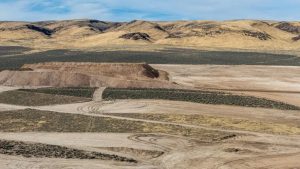Key takeaways from the Fed’s decision to deliver a jumbo-sized interest rate cut
The Federal Reserve slashed interest rates aggressively Wednesday, announcing the first rate cut since March 2020.
The half-point move paves the way for lower borrowing costs on everything from mortgages to credit cards.
It marks a crucial milestone for the central bank’s historic inflation fight, which kept rates at a bruising 23-year high for more than a year. President Joe Biden acknowledged the Fed’s success at such a critical juncture, saying in a statement on X that “we just reached an important moment.” Meanwhile, stocks seesawed after the decision was announced.
The decision to cut by half a point, which wasn’t unanimous, telegraphs to the world that central bankers feel a sense of urgency to provide the US economy with swift relief from elevated borrowing costs, considering there were blaring calls in recent days for the Fed to kick off the rate-cutting cycle with a bang.
Still, Fed Chair Jerome Powell said in a news conference that the central bank is “not behind” the curve and that the Fed’s decision to cut by half a point is “a sign of our commitment” to not fall behind in responding to the economy’s reality.
Fed Governor Michelle Bowman, who has frequently expressed worries about lingering price pressures, was the lone dissenter, backing a quarter-point cut instead. That was the first dissent from a Fed governor since 2005.
Fed officials also penciled in more rate cuts by year’s end in their latest economic forecasts, compared to the single cut in 2024 that they projected in June. Central bankers also expect unemployment to rise higher this year to 4.4%, up from the current rate of 4.2% as of August.
Despite the Fed’s aggressive action on Wednesday, the central bank’s inflation battle, in the face of immense pressure from Wall Street and politicians, seems to be paying off so far: Inflation is substantially below the 40-year highs seen in the summer of 2022 — all without a recession. The momentous progress seen since then isn’t solely due to higher interest rates, but also because of the US economy’s gradual recovery from severe pandemic disruptions.
The Fed has indeed walked a fine line in taming price pressures without sacrificing America’s job market, an extremely difficult task because rate hikes function by deliberately cooling the economy. That tool wielded by the Fed is typically described as a sledgehammer, not a scalpel.
Still, despite inflation receding, jitters remain, mostly centered around the job market’s future now, rather than the possibility of inflation getting stuck or reigniting. That’s precisely why some called for the Fed to start cutting rates aggressively. The unemployment rate ratcheted up relatively quickly over the past year, though from an unusually low point. Economists have widely said that whenever unemployment begins to rise, it tends to catch momentum and keep rising.
That has put into jeopardy a possible soft landing for the US economy — a scenario in which inflation is tamed without a sharp increase in unemployment. Such an outcome has only happened once in modern history, in the mid-1990s, so the Fed is within reach of a historic achievement.
Here are key takeaways from the Fed’s latest rate decision.


